CADEX Cycling: A comprehensive range overview
You've seen its wheels bolted into CCC Team's bikes, here's the lowdown on Giant's high-end components brand
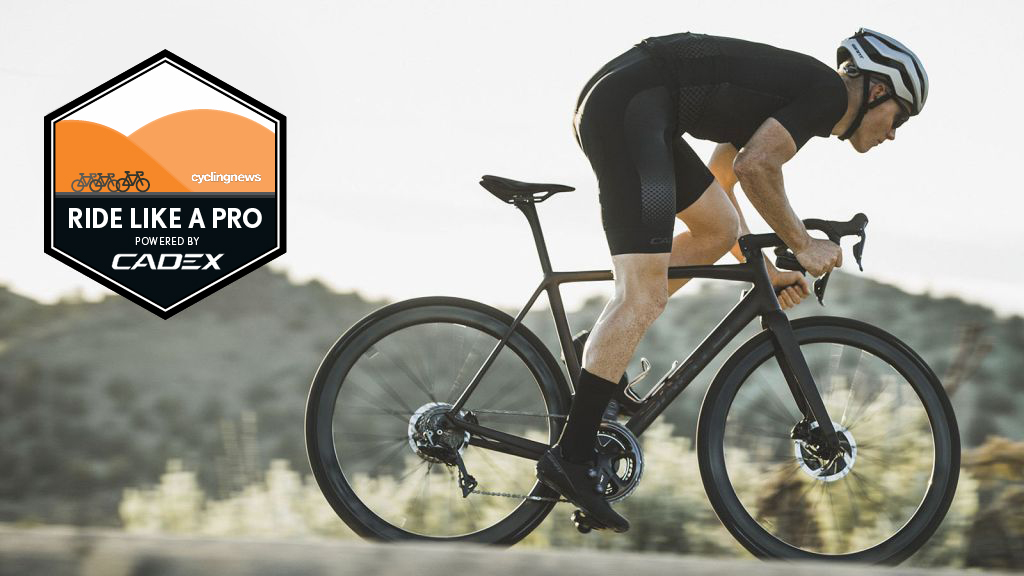
The first CADEX cycling product was launched back in 1987, when Giant lifted the veil on its CADEX carbon-fibre bike frame. This lugged carbon fibre frame was quite a feat because it was one of the first to be produced on a mass scale. Since then carbon bikes have become the norm, and the CADEX name drifted off into obscurity.
A little over a year ago, Giant revied the CADEX moniker but you won’t find it written on the downtube of a bike frame, but wheels, tyres, and saddles instead. Designed in collaboration with the CCC Team, the products under the CADEX name are targeted at the higher end of the spectrum, and have the kitchen sink’s worth of Giant’s manufacturing knowledge behind them — they have the price tags to match.
Being a part of Giant’s sizable portfolio, the brand could have gone the way of many other inhouse component brands making everything from wheels and tyres to multitools and handlebars, but instead have adopted the In-N-Out Burger model (for the time being) — have a small menu, but make sure that what makes the board is a homerun.
CADEX Road Wheels
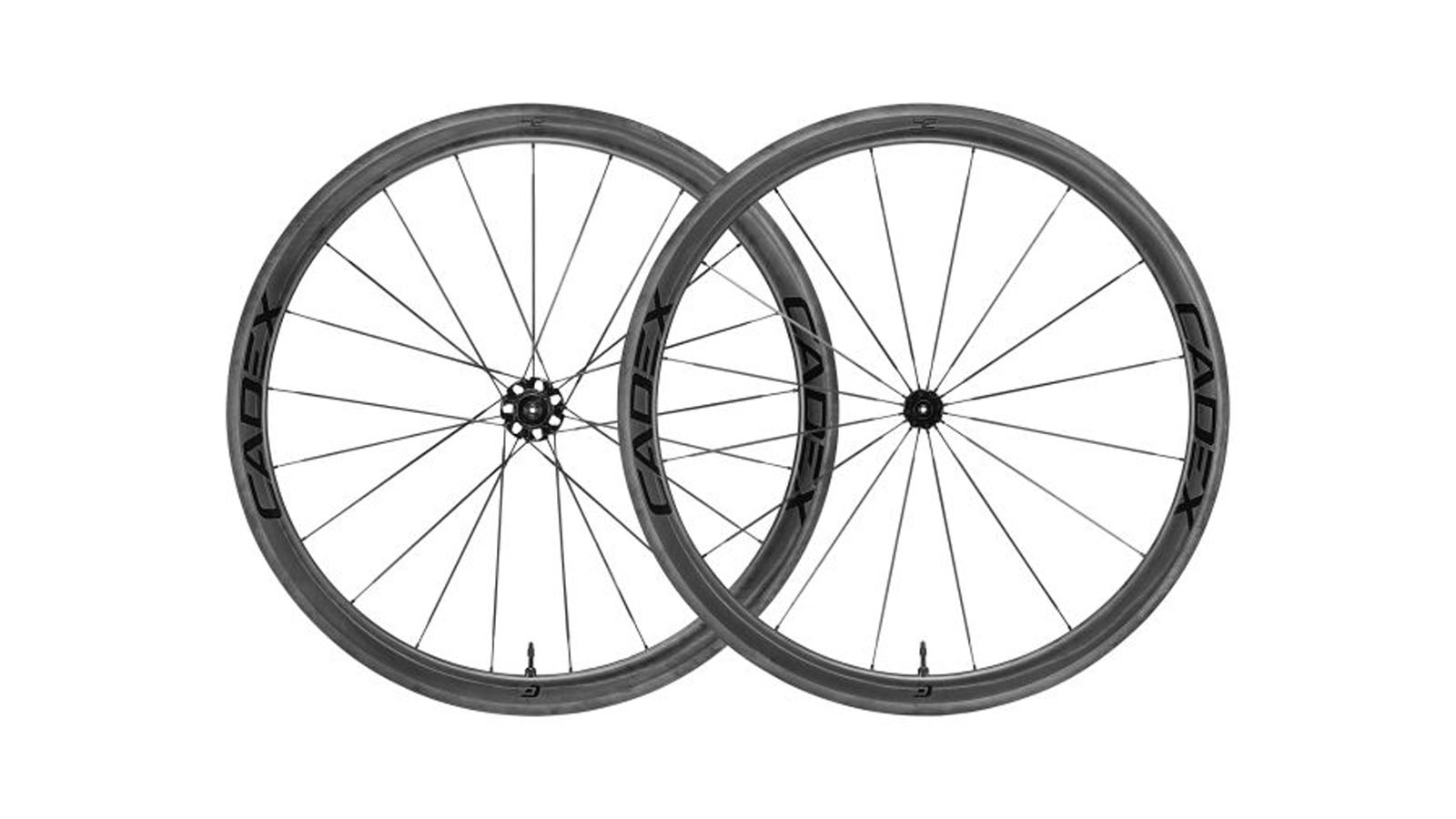
CADEX 42
Specifications
Reasons to buy
Reasons to avoid
Slotting in as the lightweight, versatile offering, the CADEX 42 is, you guessed it, 42mm deep with a 19.4mm internal rim width and 23mm external rim width. Available in rim and disc brake varieties as well as tubular and tubeless, the latter sees a hookless design which the brand says improves aerodynamics, ‘through a continuous carbon fibre structure and enhances overall durability.’ On the tubeless rim, the valve hole also sees a flat section for the tubeless valve nut to back up against, making for a better interface and seal.
If you’re a member of team rim brake, the CADEX 42 is one of a dying breed of newly launched wheels that don’t have a rotor mount on the hub. CADEX branded hubs with DT Swiss internals are strung into the rims with carbon aero spokes with Giant’s Dynamic Balanced Lacing, which tensions the spokes to be even while the wheel is weighted and under pedalling forces, which is the opposite of most wheels on the market. In the disc brake, tubeless variety, the CADEX 42 are claimed to weigh a respectable 1327g and are backed by a five-year incident replacement policy and two-year manufacturer warranty.
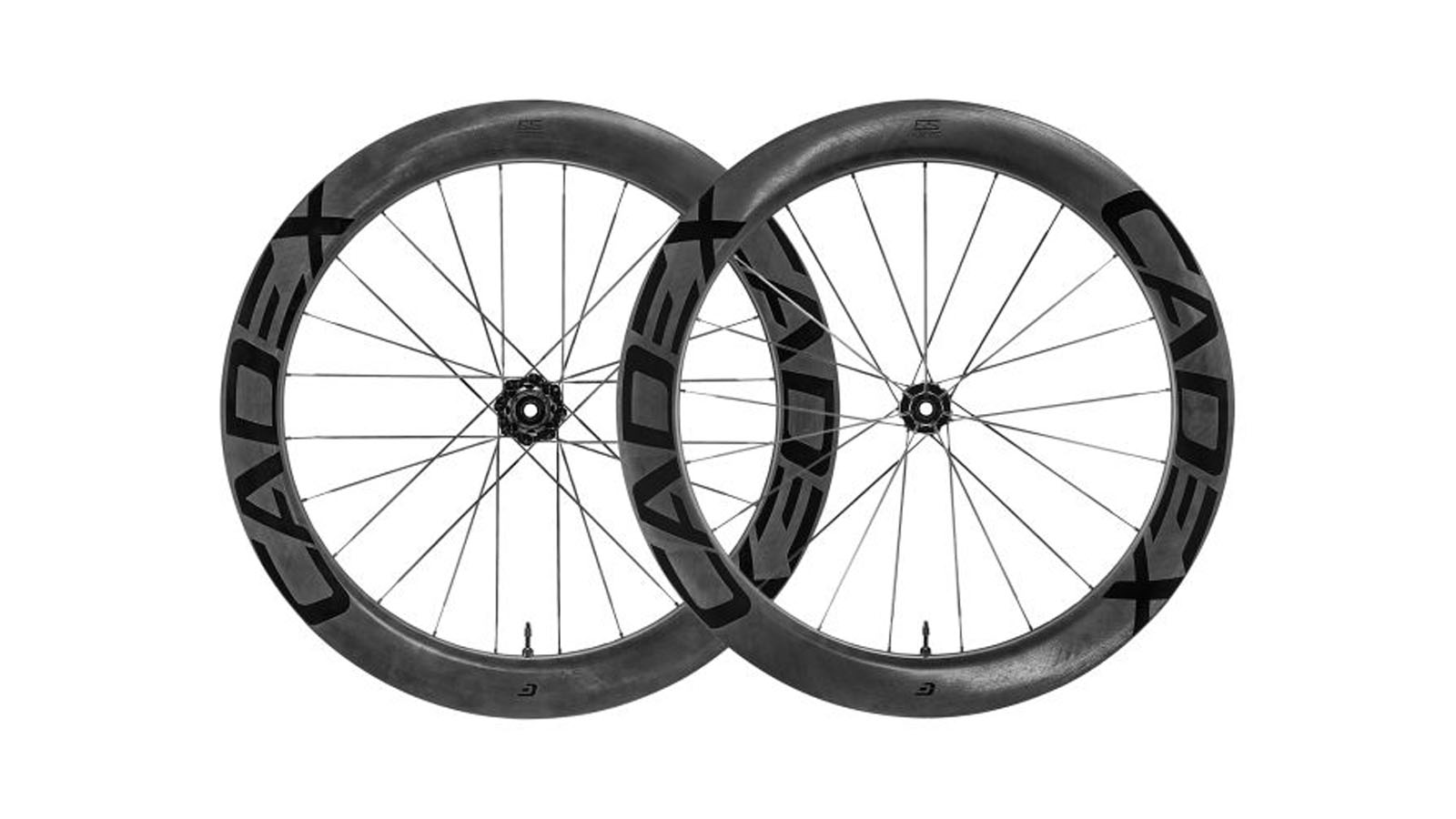
CADEX 65
Specifications
Reasons to buy
Reasons to avoid
The CADEX 65 is the deeper, more aero wheel in CADEX’s line-up. Beyond adding 20mm in depth, the rim gets wider too, measuring 22.4mm internal and 26mm external, and is claimed to weigh 1501g in the disc tubeless version. Like its shallower stablemate, the CADEX 65 are available in rim and disc brake varieties for tubular or tubeless tyres.
The rims feature the same hookless rim design, aero carbon spokes, which are tensioned using Dynamic Load Balancing and the CADEX hubs with DT Swiss internals.
Aero wheels
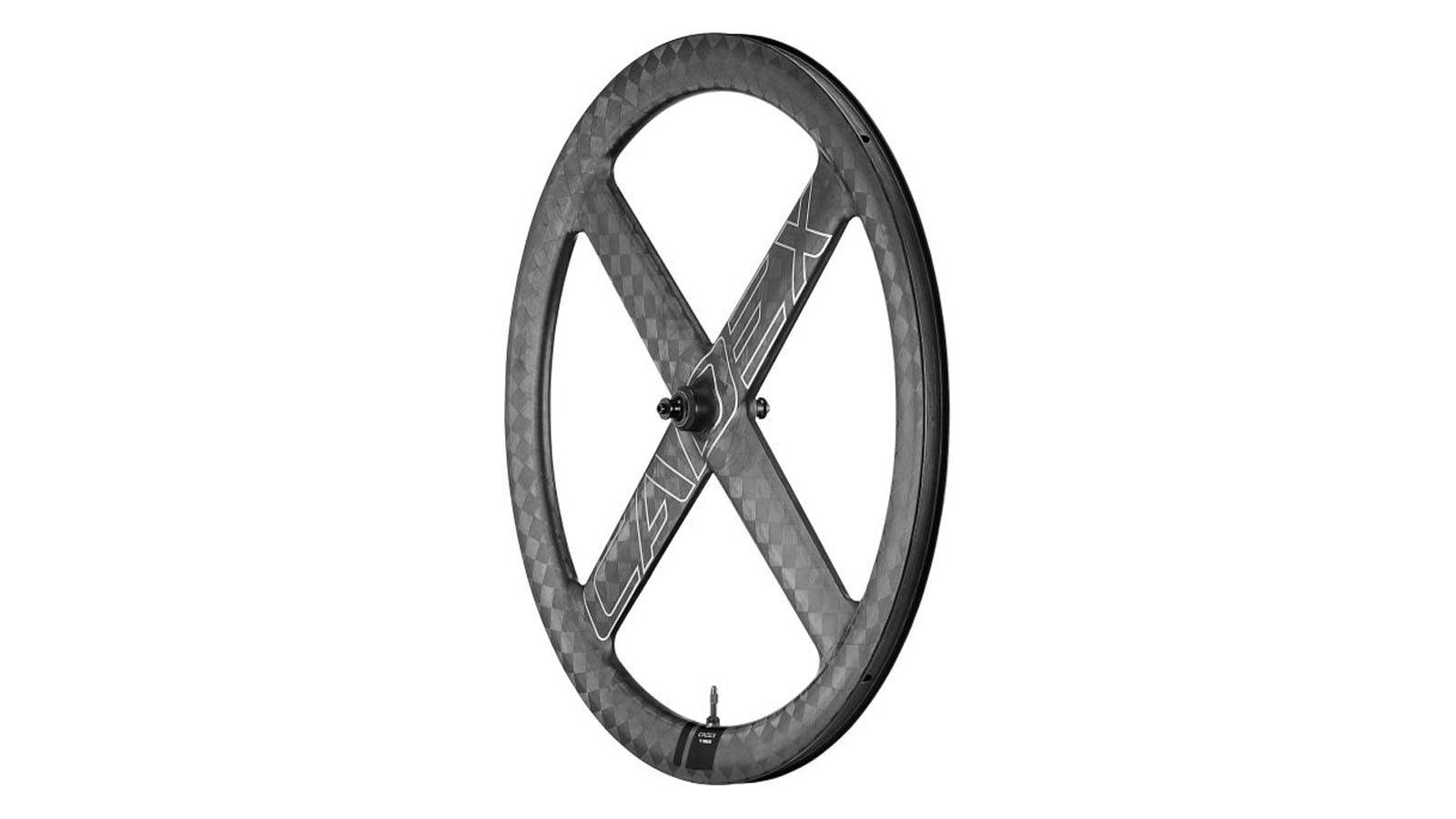
CADEX 4-Spoke
Specifications
Reasons to buy
Reasons to avoid
While the other two wheels in CADEX’s line-up are technically aero, the wheels that fall under its Aero range are designed only for races that pit the rider against the clock. CADEX developed its 4-spoke wheel in collaboration with Aero Concepts Engineers (ACE) in Magny-Cours, France. Made from 18k carbon fibre, the wheel features a 21mm internal rim width and 27.6mm external rim said to create the optimal air transition from tire sidewall to the wheel.
The CADEX hub system is moulded into the rim and, according to the firm, the wheels offer class-leading torsional stiffness. Available in tubular and tubeless versions, CADEX is only offering the 4-spoke wheel for rim brakes which is claimed to weigh 806g (tubeless model).
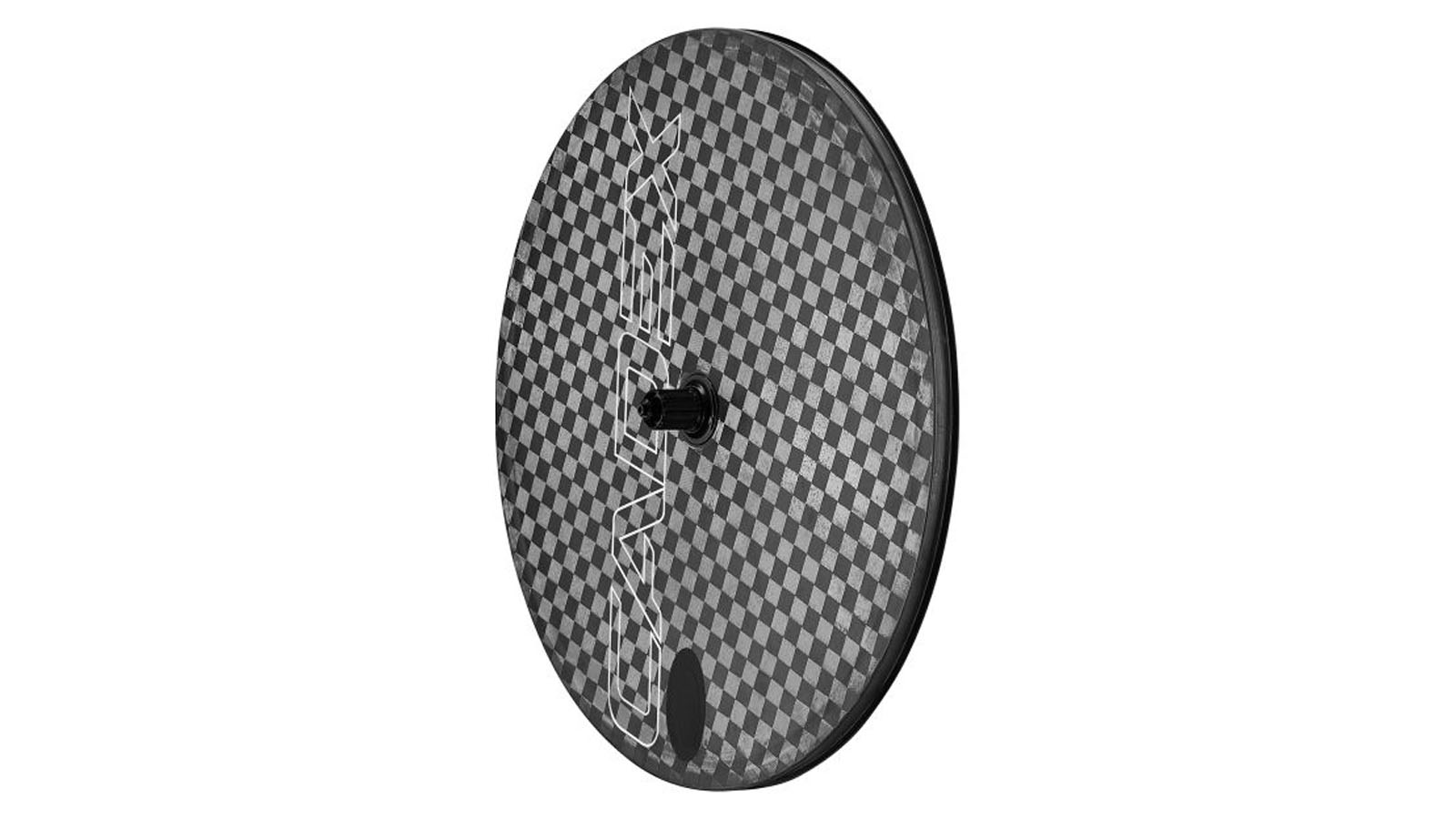
CADEX Aero Disc
Specifications
Reasons to buy
Reasons to avoid
The CADEX Aero Disc was designed for the CCC team and elite triathletes. The brand also worked with ACE to build the fastest spokeless wheel it could. Made from 18k carbon, like the 4-spoke if features a 21mm internal width, 27.6mm external, and is available for tubeless and tubular tires — meaning you don’t have to fuzz with tubular glue if you don’t want to.
CADEX is only making the wheels for rim brakes, for the time being and the hubs utilise DT Swiss internals.
Saddles
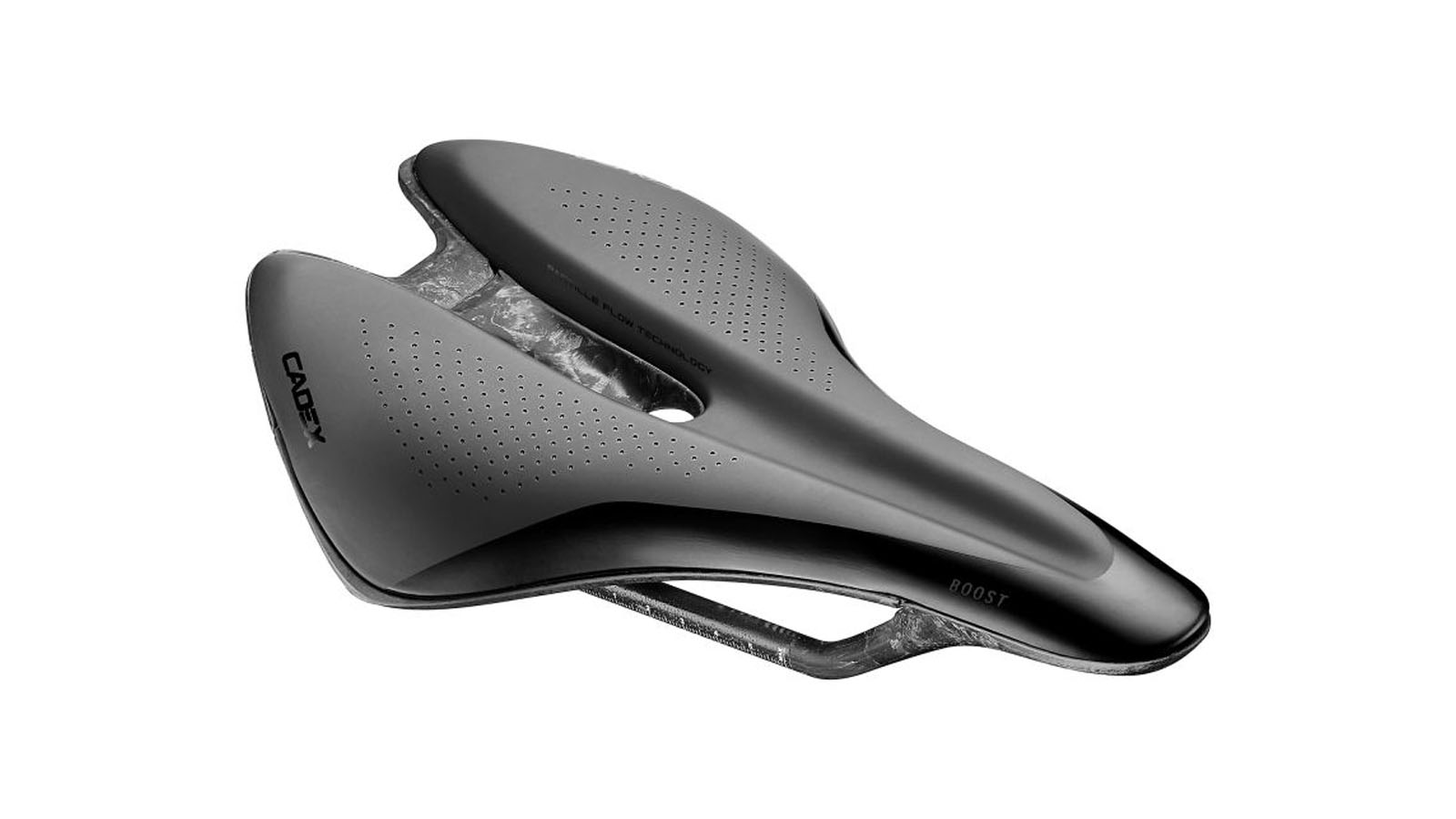
CADEX Boost Saddle
Specifications
Reasons to buy
Reasons to avoid
Given that CADEX is pitched towards the higher performance end of the market, it’s no surprise to see the only saddle in the range is a wide snub-nose-type perch which can help riders maintain a more aggressive position — though this type of seating arrangement has been wildly popular for riders of all kinds.
The CADEX Boost measures 149mm wide, 246mm long, and is claimed to weigh 138g. The rails and base are made from carbon, using the brands ‘Advanced Forged Composite Technology,’ creating a stiff frame said to eliminate unwanted flex. CADEX uses a two-piece carbon construction, which moves the rails to the outer edge of the nose and the rear edge, which improves compliance and is said to improve dampening of road vibration and reduce weight.
There isn’t a massive cutout like many similar truncated saddles, still, there is a channel that runs the length of the shell. Underneath the area, which supports your sits bones are free-flowing EPTU particles that mould to your bony outcrop and distribute the load over a broader contact area without shifting weight onto soft tissue.
Tyres
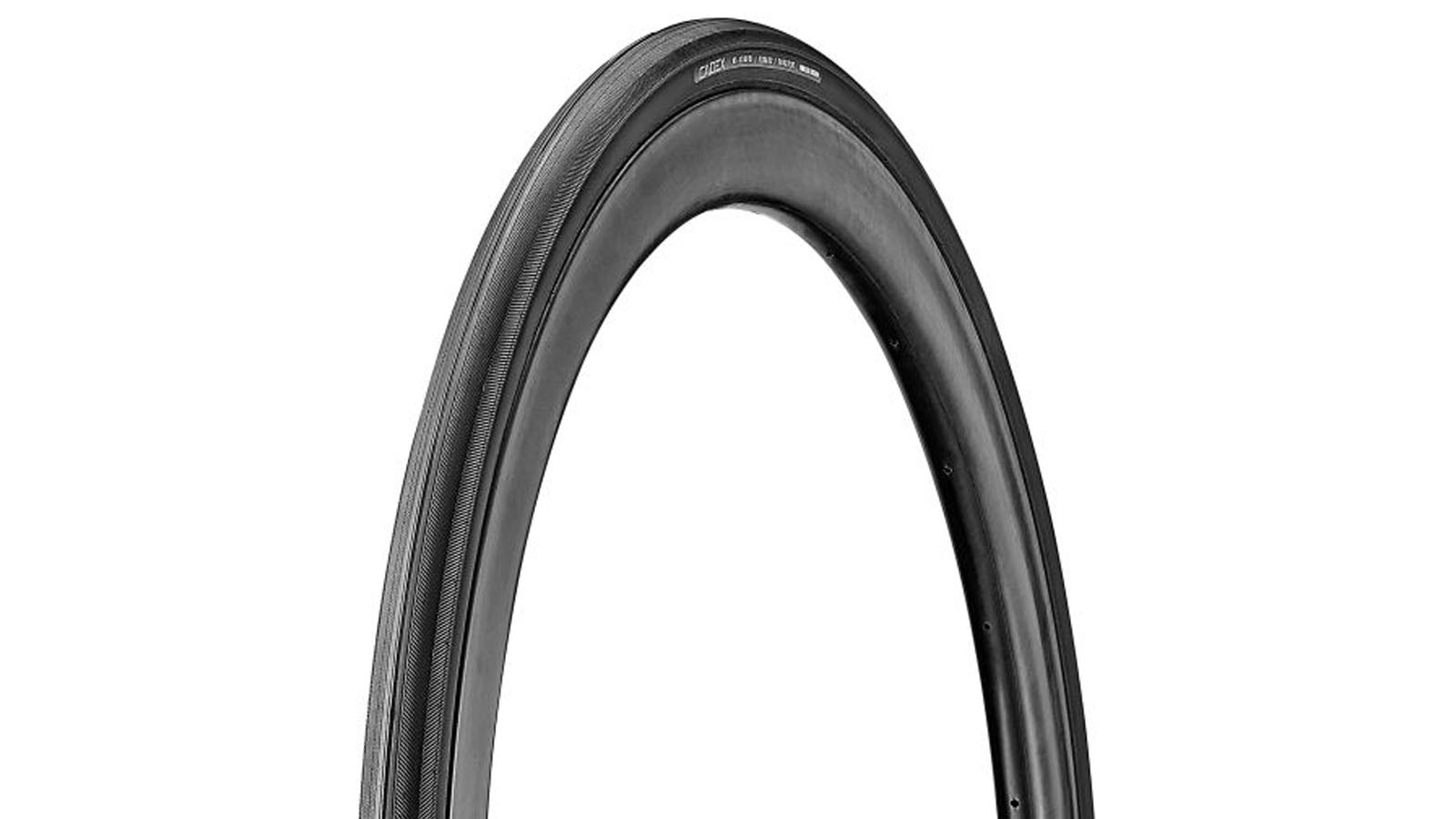
CADEX Race Tubeless Tyres
Specifications
Reasons to buy
Giant has been manufacturing and selling its own tubeless road tyres for some time now, and depending on the model, they aren’t half bad. However, the CADEX Race Tubeless takes that to the next level, aiming to compete with the top-end high-performance rubber.
Available in widths from 23-28c, each sees silica-based compound the brand calls RR-S, which is claimed to have low rolling resistance and no a shortage of cornering grip, even in the wet. CADEX uses a 170TPI single layer casing for a supple ride and a Kevlar breaker belt under the tread to stave off sharp objects. In the 25c width, they are claimed to weigh 270g.
We most recently rode these tyres on a Giant Propel earlier this year, head over to the review to hear what we thought.
The latest race content, interviews, features, reviews and expert buying guides, direct to your inbox!
Based on the Gold Coast of Australia, Colin has written tech content for cycling publication for a decade. With hundreds of buyer's guides, reviews and how-tos published in Bike Radar, Cyclingnews, Bike Perfect and Cycling Weekly, as well as in numerous publications dedicated to his other passion, skiing.
Colin was a key contributor to Cyclingnews between 2019 and 2021, during which time he helped build the site's tech coverage from the ground up. Nowadays he works full-time as the news and content editor of Flow MTB magazine.